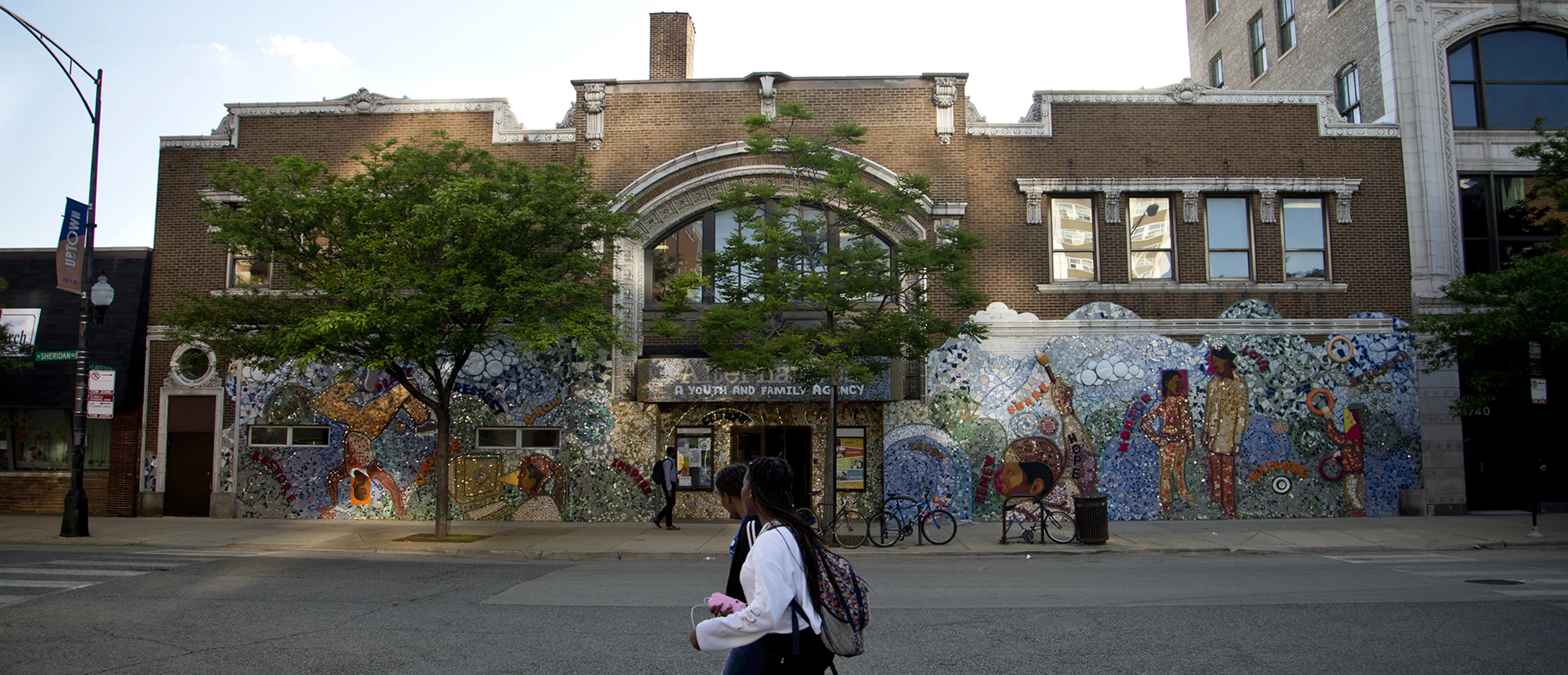History in Uptown
Residents
Margaret Anderson
In 1914, Editor and writer Margaret Anderson founded "The Little Review," a literary magazine. It featured work from Emma Goldman, Gertrude Stein, and Andre Breton. Anderson lived here at 837 West Ainslie Street until she could no longer afford the rent. The magazine introduced American readers to T.S. Eliot, Ezra Pound, William Butler Yeats, and James Joyce.
Susan Lurie
Susan Lurie, who lived at 923 West Margate Terrace, was a close friend of Nathan Leopold and Richard Loeb, the two teenagers who kidnapped and murdered 14-year-old Bobby Franks in 1924. Lurie joined Leopold for lunch the day before the police took him into custody. She later told Assistant State's Attorney Joseph Savage that Leopold was "lighthearted--and in his attitude there was not the slightest uneasiness while we discussed the case." Lurie said she even went dancing with Leopold the night after he murdered Franks.
History in Uptown
Clubs and theaters
The Green Mill
The Green Mill Jazz Club originally opened in 1907 as Pop Morse’s Roadhouse at 4802 North Broadway Avenue. Mourners on their way to a funeral at St. Boniface’s Cemetery would often stop in for a drink. It was also popular with the silent film stars at Essanay Studios on nearby Argyle Street, including Charlie Chaplin, Wallace Beery, and “Broncho Billy” Anderson (who owned Essanay with George Spoor). After a long day of filming, the actors would ride their horses to the roadhouse and tip a few.
In 1910, the Roadhouse was acquired by the Chamales Brothers, who installed a giant green windmill on the roof and renamed it The Green Mill Gardens. The new club opened in 1914 and allowed patrons to dance and drink in the gardens out back while enjoying live entertainment by such celebrities as Al Jolson, Eddie Cantor, Sophie Tucker, and Mary Pickford. At the time, the Green Mill was massive and its “sunken gardens” could seat up to 2,500 people for outdoor concerts.
In the 1920s, it became a highly popular, fast-moving jazz club and classic speakeasy. “Machine Gun” Jack McGurn, or Al Capone, or both, allegedly acquired an ownership interest in the business (though it could be urban myth). At some point, and this part is not myth, McGurn sought to convince crooner and comedian Joe E. Lewis not to defect to the competing Rendez-Vous Café in pursuit of a better offer. Lewis should have known better not to mess with gangsters. Soon after he opened at the Rendez-Vous, McGurn and a few thugs greeted him at the door to his Commonwealth Hotel room, pistol-whipped him, and slit his throat from ear to ear.
The Green Mill remained wildly popular as a jazz club throughout the 1930s, 40s, and 50s, although jazz began to falter just as the Beatles were setting foot at Kennedy Airport. Business tailed off over the years, but the club was purchased and restored to its Prohibition-era character in 1986. Today it continues to thrive with a steady lineup of great jazz musicians.
History in Uptown
National Landmarks
Bachman House
Architect Bruce Goff designed this home and studio for recording engineer Myron Bachman in 1948. The city designated it a landmark on December 9, 1992.
Hutchinson Street District
This street district in uptown was designated as a landmark on august 31, 1977. it contains some of the best examples of prairie style residences, many of which were designed by architect george w. maher. the mixture of prairie style, classic revival, queen anne, and richardsonian romanesque "provides a unique perspective on the changes that took place in residential architecture between 1890 and 1920," according to the city of chicago's official tourism site.
Immaculata High School Building
This all-girls high school in uptown was open from 1921 to 1981. it was designated as a landmark on july 27, 1983. the school and convent buildings were designed by prairie school architect barry byrne, an apprentice of frank lloyd wright.

